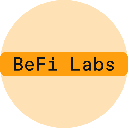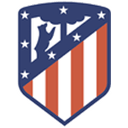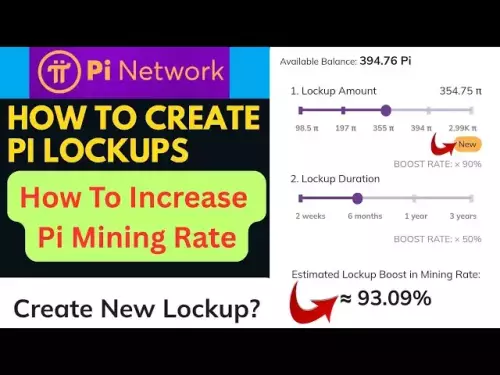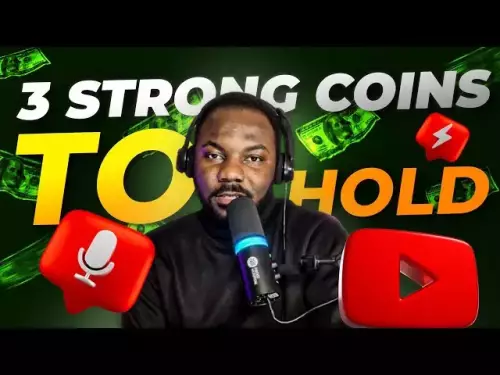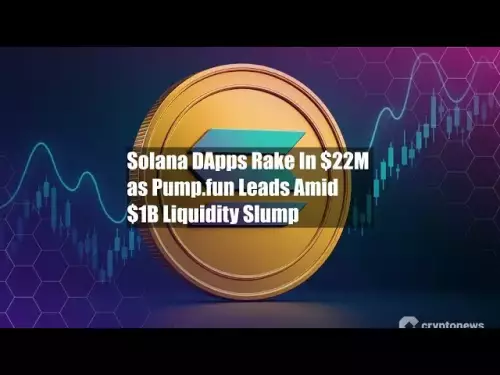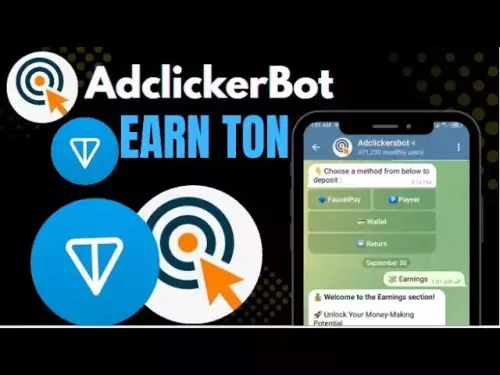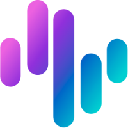-
 bitcoin
bitcoin $114779.865156 USD
2.30% -
 ethereum
ethereum $4226.519789 USD
2.39% -
 tether
tether $1.000545 USD
0.04% -
 xrp
xrp $2.890223 USD
0.92% -
 bnb
bnb $1030.029301 USD
2.95% -
 solana
solana $212.824944 USD
1.69% -
 usd-coin
usd-coin $0.999757 USD
0.01% -
 dogecoin
dogecoin $0.234961 USD
-0.27% -
 tron
tron $0.337174 USD
0.42% -
 cardano
cardano $0.804783 USD
0.09% -
 hyperliquid
hyperliquid $45.748770 USD
-2.85% -
 chainlink
chainlink $21.699170 USD
0.82% -
 ethena-usde
ethena-usde $1.001452 USD
0.08% -
 avalanche
avalanche $30.237800 USD
1.14% -
 stellar
stellar $0.372604 USD
1.52%
What is the purpose of an NFT project's destruction mechanism?
An NFT's destruction mechanism, or "burning," permanently removes it from circulation, increasing scarcity and preserving value by reducing supply on the blockchain.
Aug 09, 2025 at 06:01 pm
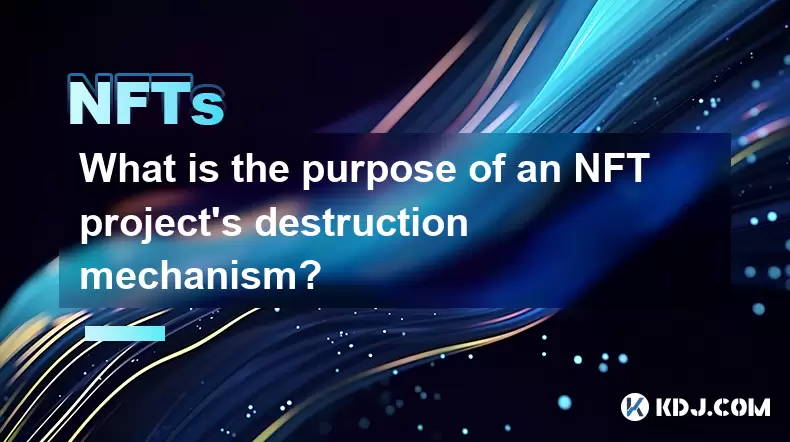
Understanding the Concept of NFT Destruction Mechanisms
An NFT project's destruction mechanism refers to a built-in protocol or smart contract function that allows for the permanent removal of non-fungible tokens from circulation. This process is also known as 'burning' an NFT. When an NFT is destroyed, it is irreversibly removed from the blockchain ledger, meaning it can no longer be transferred, viewed, or accessed by any wallet or marketplace. The primary purpose of this mechanism lies in supply control, which directly impacts the perceived and actual value of the remaining NFTs within a collection. Projects integrate destruction features to enforce scarcity, reward community engagement, or fulfill specific utility conditions.
Scarcity and Value Preservation Through Token Reduction
One of the core reasons for implementing a destruction mechanism is to increase scarcity. In economic terms, reducing supply while maintaining or increasing demand leads to higher asset value. For example, if an NFT collection originally consists of 10,000 items and 1,000 are burned, the remaining 9,000 become rarer by comparison. This artificial scarcity can influence market dynamics on platforms like OpenSea or LooksRare, where collectors may place higher bids on rarer assets. Projects often communicate destruction events transparently to build trust. The burning of NFTs is recorded on-chain, allowing anyone to verify that the tokens are truly gone, which enhances the credibility of the project’s commitment to scarcity.
Utility-Driven Destruction in Play-to-Earn and GameFi Projects
In GameFi and play-to-earn (P2E) ecosystems, NFT destruction serves functional gameplay purposes. Certain in-game items, such as weapons, armor, or power-ups, may be designed to be consumed after use. When a player uses a limited-use item, the smart contract automatically triggers a burn function. For instance:
- A magic scroll NFT might grant a one-time ability and then self-destruct.
- A consumable resource token could be required to upgrade a character and is removed upon completion.This ensures that in-game economies remain balanced by preventing infinite replication of powerful assets. The destruction mechanism here is not just symbolic but essential to gameplay integrity, preventing inflation and maintaining fairness among participants.
Community Incentives and Reward Redemption Systems
Many NFT projects use destruction as part of reward redemption frameworks. Holders may be required to burn their NFTs to claim exclusive benefits, such as access to a whitelist for a new drop, physical merchandise, or participation in special events. For example: - A project might announce that burning a Tier-1 NFT grants entry into a private Discord server.
- Burning three common NFTs could allow a user to mint one rare variant.These systems encourage active participation and help filter out passive or speculative holders. The irreversible nature of burning ensures that rewards are distributed only to committed community members. Projects often publish the burn address and transaction hashes so users can confirm the process is fair and verifiable.
Technical Implementation of NFT Destruction on Smart Contracts
The actual process of destroying an NFT occurs through specific functions in the Ethereum ERC-721 or ERC-1155 smart contracts. Developers include aburn()function that only authorized addresses—typically the token owner or a designated contract—can call. To execute a burn: - The user initiates a transaction calling the
burn(tokenId)function. - The contract verifies ownership of the specified
tokenId. - Upon validation, the contract updates the ownership mapping, setting the owner to a null address (often 0x000...dead).
- The token’s metadata remains on-chain for historical transparency, but it is no longer transferable.Some contracts also emit a
Transferevent with a zero address as the recipient, signaling the burn to indexing services. Platforms like Etherscan detect these events and mark the NFT as 'burned' in their interface. It is crucial that the contract is audited to prevent accidental burns or unauthorized access.Transparency and Trust in Public Burn Events
Public burn events are often used as marketing and trust-building tools. Projects may livestream burn transactions or publish real-time updates on social media. The burn address—commonly 0x000000000000000000000000000000000000dEaD—is a wallet that cannot initiate transactions, making retrieval impossible. When users see their NFTs sent to this address, they can independently verify the burn on block explorers. This level of transparency discourages scams and reassures investors that the project is not hoarding burned tokens. Some projects even allow users to burn NFTs directly from their dApp interface with a single click, streamlining the process while maintaining security.Environmental and Economic Considerations of NFT Burning
While burning NFTs does not consume additional energy beyond the transaction fee (gas), it contributes to the broader discussion on blockchain efficiency. Each burn transaction requires network validation, so frequent burns can increase congestion and gas costs temporarily. Economically, excessive burning without clear utility or demand can backfire, leading to community frustration if holders feel pressured to destroy assets without adequate return. Projects must balance destruction with long-term value creation. For instance, burning a large portion of a collection without a corresponding increase in utility may lead to price volatility or loss of trust.Frequently Asked Questions
Can a burned NFT ever be recovered? No. Once an NFT is burned, it is permanently removed from circulation. The token ID remains on the blockchain for record-keeping, but it cannot be transferred or restored. The ownership is set to an unspendable address, making recovery technically impossible.How can I verify that an NFT has been burned?You can check the transaction on a blockchain explorer like Etherscan. Search for the NFT’s contract address and token ID. If the token was burned, the ownership will show as a null or dead address (e.g., 0x000...dEaD), and the transaction will include a burn event or transfer to zero.
Does burning an NFT affect the metadata or image?The metadata and image associated with the NFT usually remain accessible via IPFS or other decentralized storage, even after burning. However, the token itself becomes non-transferable and is considered out of circulation.
Are there risks in using a burn function in a smart contract?Yes. If the burn function is poorly coded, it could allow unauthorized burns or fail to properly nullify ownership. Always ensure the contract has been audited by a reputable firm and review the source code on platforms like Etherscan before interacting.
Disclaimer:info@kdj.com
The information provided is not trading advice. kdj.com does not assume any responsibility for any investments made based on the information provided in this article. Cryptocurrencies are highly volatile and it is highly recommended that you invest with caution after thorough research!
If you believe that the content used on this website infringes your copyright, please contact us immediately (info@kdj.com) and we will delete it promptly.
- AI Training's Energy Crisis: Can Decentralization with Greg Osuri Offer a Solution?
- 2025-09-30 20:45:14
- Prenetics, Danny Yeung, and Token 2049: A Bold Bitcoin Strategy
- 2025-09-30 20:45:14
- ChatGPT, Bitcoin, and $HYPER: Riding the Crypto Wave
- 2025-09-30 16:25:14
- Mutuum Finance (MUTM): Riding the DeFi Wave with Crypto Price Prediction
- 2025-09-30 16:25:14
- XRP ETF Approval Odds Soar: Analyst Predicts $33 Price Surge!
- 2025-09-30 16:30:01
- Keel, Solana, and Sky Stablecoin: Fueling the Future of DeFi
- 2025-09-30 16:45:13
Related knowledge

How can I determine the authenticity of an NFT project?
Sep 23,2025 at 05:18pm
Understanding the Project Team and Their Background1. Research the identities of the team members behind the NFT project. Verified social media profil...

What's the difference between NFTs and traditional collectibles?
Sep 19,2025 at 12:55pm
Digital Ownership and Provenance1. NFTs are built on blockchain technology, which ensures transparent and immutable records of ownership. Every transa...
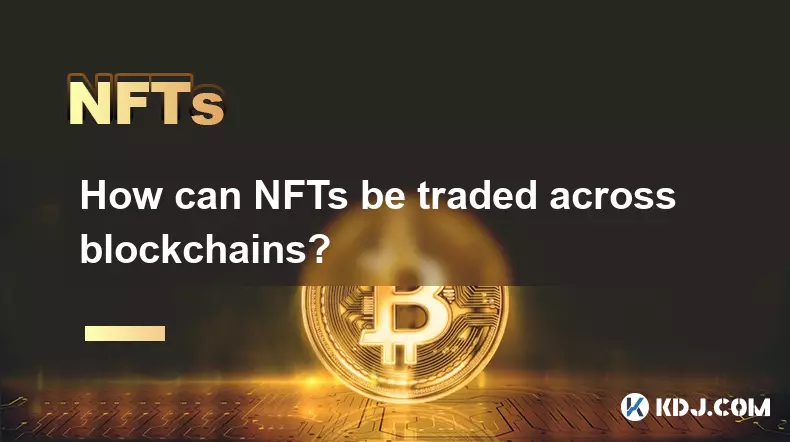
How can NFTs be traded across blockchains?
Sep 19,2025 at 12:00pm
Understanding Cross-Chain NFT Trading1. Non-fungible tokens (NFTs) are digital assets that represent ownership of unique items on a blockchain. Origin...

How is NFT rarity calculated?
Sep 18,2025 at 07:54pm
Understanding NFT Rarity Metrics1. NFT rarity is determined by analyzing the uniqueness of individual traits within a collection. Each NFT typically c...
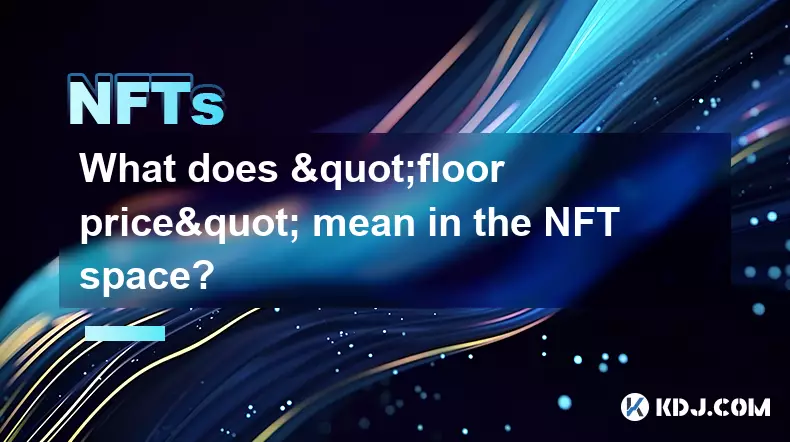
What does "floor price" mean in the NFT space?
Sep 22,2025 at 06:36am
Floor Price: A Core Metric in the NFT Marketplace1. The term floor price refers to the lowest current asking price for any item within a specific NFT ...

How do NFTs help content creators?
Sep 18,2025 at 08:00am
NFTs Empower Creators with Ownership and Monetization1. NFTs provide content creators with verifiable ownership of their digital works, ensuring authe...

How can I determine the authenticity of an NFT project?
Sep 23,2025 at 05:18pm
Understanding the Project Team and Their Background1. Research the identities of the team members behind the NFT project. Verified social media profil...

What's the difference between NFTs and traditional collectibles?
Sep 19,2025 at 12:55pm
Digital Ownership and Provenance1. NFTs are built on blockchain technology, which ensures transparent and immutable records of ownership. Every transa...

How can NFTs be traded across blockchains?
Sep 19,2025 at 12:00pm
Understanding Cross-Chain NFT Trading1. Non-fungible tokens (NFTs) are digital assets that represent ownership of unique items on a blockchain. Origin...

How is NFT rarity calculated?
Sep 18,2025 at 07:54pm
Understanding NFT Rarity Metrics1. NFT rarity is determined by analyzing the uniqueness of individual traits within a collection. Each NFT typically c...

What does "floor price" mean in the NFT space?
Sep 22,2025 at 06:36am
Floor Price: A Core Metric in the NFT Marketplace1. The term floor price refers to the lowest current asking price for any item within a specific NFT ...

How do NFTs help content creators?
Sep 18,2025 at 08:00am
NFTs Empower Creators with Ownership and Monetization1. NFTs provide content creators with verifiable ownership of their digital works, ensuring authe...
See all articles

















